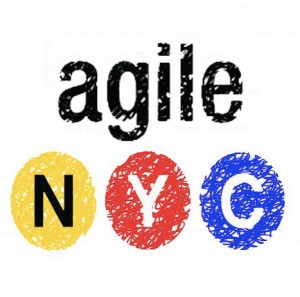As mentioned in the previous blog post, Pace will be hosting Agile NYC for their 5th annual Agile Day, happening on the 18th. For most who have not been introduced to or worked with agile methodologies, the concept of the agile approach can seem a bit abstract, and abstraction might be intimidating at first, but agile is something you’ll want to understand concretely before looking for work.
 Agile NYC’s coordinator Joe Krebs, in answering a few of our questions about agile, mentioned that a company using the agile approach will expect its employees to be familiar with the methodologies before they are hired. So how does a student go from zero experience in agile to pro upon job-interview? (Actual representation of becoming an agile pro depicted below).
Agile NYC’s coordinator Joe Krebs, in answering a few of our questions about agile, mentioned that a company using the agile approach will expect its employees to be familiar with the methodologies before they are hired. So how does a student go from zero experience in agile to pro upon job-interview? (Actual representation of becoming an agile pro depicted below).
Well, you won’t have to be pro, but having some experience with agile will be necessary in your field. Luckily for most of you, gaining experience isn’t too hard around here, since Pace is one of Agile NYC’s closer partners. Agile NYC’s events are often in and around the university, like Agile Day on the 18th, and participating in these events will get you up to speed. Then, if you still want more practice, you can gain hands on experience by joining teams like Seidenberg Creative Labs, who will use the agile approach in their projects, or taking certain classes — an example of which being Dr. Scharff’s mobile software engineering class, CS 389 — that implement agile techniques on classroom projects. Having a rich understanding of agile will really give you the edge you need when employers compare you to you your competition.

Agile, in the simplest terms, is a product development methodology, specifically for programmers. Many careers in programming lead to projects where someone (or a company) will consult a team of programmers to build what they need. While the programmers do their thing and the ‘bosses’ do their own, often times problems arise from start to finish. The agile method of working through a project helps avoid a lot of these problems or provides simplified methods of solving said issues as they arise — and they will arise.
From its official conception in 2001, when the Agile Manifesto was created, agile’s values are described as,
“Individuals and interactions over processes and tools.
Working software over comprehensive documentation.
Customer collaboration over contract negotiation.
Responding to change over following a plan.
That is, while there is value in the items on the right, we value the items on the left more,” (agilemanifesto.org).
This set of rules directly opposes the more traditional methodology known as the Waterfall method. Agile emphasizes the importance of personable teamwork that moves forward as a cohesive effort, rather than a group of separated workers working towards a common goal. To do this successfully, agile encourages daily meetings for teams to discuss issues before or as they arise rather than after. Not only are daily meetings valuable for avoiding issues, they also stimulate creativity and brainstorming between team members. More often than not, these meetings take on an informal tone and promote a sort of playfulness to offset stress or idea blockage.
Now that you’re on your way to becoming an agile pro, instead of wandering around next Thursday’s event, spending all your time learning what the heck agile is in the first place, you can now focus on the real meat of Agile day and feast on its workshops and networking opportunities.

